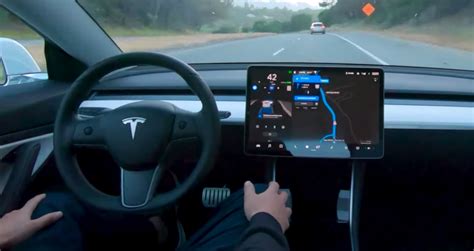In recent days, the tech world has been abuzz with yet another controversy surrounding Tesla’s Full Self-Driving (FSD) feature. A stark illustration of the ongoing safety issues with autonomous vehicle technology occurred when a Tesla in FSD mode failed to recognize a moving train, resulting in a near-fatal incident. While autonomous driving promises a future of reduced traffic accidents and more efficient road usage, the current reality betrays significant shortcomings. From unresolved technical limitations to regulatory oversights, the incident raises substantial questions about whether our roads are ready for this technology and vice versa.
Evaluating the situation pragmatically, it becomes evident that Tesla’s FSD is not infallible. The incident in question unfolded on a foggy day, a condition that even seasoned drivers approach with caution. Commenters have pointed out that most human drivers would naturally slow down, using not just their vision but their hearing to perceive an oncoming train. Advanced sensing technologies like LiDAR and radar are touted as mechanisms that could fill the gap left by human senses, yet their own limitations become glaringly apparent in adverse weather conditions like fog or snow. This juxtaposition raises the critical point that until these sensors evolve, human intervention will always be necessary—a cornerstone of the argument against the rollout of consumer-level autonomous vehicles in complex driving environments.
The heated discussion isn’t solely about technology; it also centers on driver responsibility. Some commenters argue that the driver behind the wheel should have been more vigilant, especially since a similar incident had occurred for him previously. Enabling FSD in bad weather while knowing the system’s past performance inadequacies is indeed reckless. This scenario harkens to the broader issue where drivers might rely too heavily on FSD, effectively diminishing their own driving skills and reaction time. **Trust** in technology should never outweigh common sense—a calculated mistrust has its place because lives are at stake.
Regulation, or the apparent lack of stringent oversight, seems to be another cornerstone of the debate. The proposition that regulators should remove such technologies from public usage until they pass rigorous safety benchmarks has garnered support. Crucially, the argument is not against innovation but cautions against treating public roads as testing tracks. **Advanced Driver-Assistance Systems (ADAS)** should be confined to controlled environments until reliable results manifest. Regulatory bodies must enforce rigorous testing, so every line of code and algorithm undergoes stress tests that cover myriad real-world scenarios.
Interestingly, another view presented is that FSD technology should not solely rely on vision systems. While humans integrate data from multiple senses—in addition to vision, they use hearing, smell, and even ‘gut’ intuition—FSD’s reliance on vision-based algorithms creates a significant gap. Alternative technologies like multiple-sensor fusion involving LiDAR, radar, and even next-gen imaging could potentially create a more reliable self-driving system. Take, for instance, this example code snippet where combining LiDAR and radar inputs for object detection can heighten accuracy in poor visibility conditions: function enhancedObstacleDetection(lidarData, radarData) { /* fusion logic to combine data */ }. However, as it stands, meeting these expectations requires strides we have yet to see.
Given these revelations, the automating industry must take a step back to re-evaluate the pace at which they push these technologies onto the consumer market. Tesla’s narrative, for instance, has often been one of **iterative development**—promises of improvements and updates with each software version. Yet, incidents like these demand introspection. Perhaps it’s time to halt this *race to autonomy* and focus on creating a hybrid approach where human and machine intelligence work in tandem more effectively. For the foreseeable future, ‘Full Self-Driving’ might imply a feature aiding human drivers substantially, but not wholly replacing them.


Leave a Reply